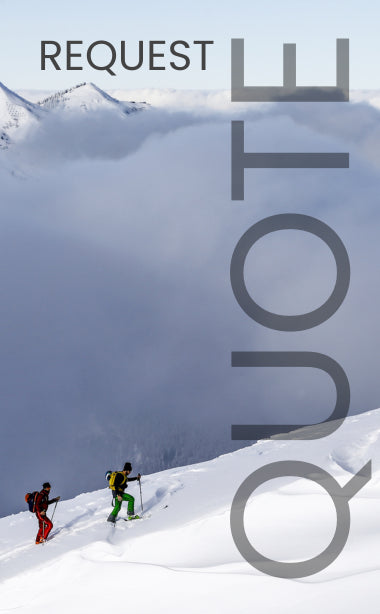You have no items in your shopping cart.
Mother Nature. She’s a beautiful thing who has the ability to lower your stress, open doorways you didn’t know existed inside of yourself, and provide you with the opportunity to connect with a quieter, slower kind of existence. She will also kill you dead without thinking twice about it.
This isn’t because Nature is cruel or sadistic, she’s just apathetic about individual survival. You see, Nature works a little differently than civilization. In civilization, we place a premium on the individual and rights for all. In Nature, the premium is placed on the species (and even those privileges can be rescinded should an entire species prove unwilling or unable to adapt to survival requirements — looking at you Dodo birds.).
The good news is that Nature doesn’t care if you cheat your way through enjoying the great outdoors. So in today’s blog from Outfitter Satellite — your online store for premium SatPhone systems and equipment — we will cover 10 tips on how to enjoy nature as safely as possible while avoiding getting lost and dying.
To check out our products or to purchase or rent a SatPhone to help accommodate your rugged and remote lifestyle, check us out online.
#1 Do Your Homework
The most basic tip we can provide for safely enjoying the outdoors is to do some research. When going to a new area, getting the lay of the land, being able to identify local flora and fauna, and having a rough understanding of the conditions can go a long way. Even if you are visiting a familiar trail or summit, reading up on expected weather, animal sightings, and recent trail conditions can inform you as to what kit or plan changes you might need to make for your trip.
#2 Bring a Map and Compass
When it comes to getting “unlost,” there are no better tools in your kit than a good map and a good compass. Make sure that the map you are carrying is detailed, recently published, and ideally is waterproof. Just about any compass can work well enough as long as they aren’t made of cheap materials or a weak casing.
Furthermore, you need to know how to use these. Make sure to practice identifying landmarks, predicting times between trail junctures, and considering how actual slopes, inclines, and declines in the terrain look on the map.
#3 Pack Snacks and Water
Surviving getting lost in a wild area isn’t about knowing how to build a long-term stationary camp complete with smoking pit, lean-to, and other “amenities,” it’s about using your head and what is in your pack to hold on long enough to be found by search and rescue workers. Food and water are an essential part of any hiking pack whether it be a morning stroll by the wooded stream or a weekend backcountry adventure.
When selecting snacks, consider things are lightweight, calorie-rich, and can be eaten hot, cold, wet, or dry. Although you will have to shop around to find products you love that check all these boxes, they’re out there, and they’re an important part of being prepared for disaster.
When it comes to water, there is something you should know. Water is extremely important — and it is also extremely heavy. Every liter of water in your pack weighs 2.2 pounds. On a day hike in temperate summer conditions, most people need two to three liters of water. That means that water probably takes up half the weight in their pack. So how can you possibly carry enough water to prepare for getting lost or injured? Simple answer: you can’t.
We recommend always having some water treatment tablets on hand in case you end up with an unplanned extended stay in nature. Better yet, consider a LifeStraw or other lightweight portable water filtration system.
#4 Have the Right Gear
Ask any experienced hiker, outfitter, or hunter and they’ll tell you that they don’t carry nearly the amount, or possibly even the same kind of equipment, that they used to. Over time, you learn what you don’t need, what you can live without, and what kind of stuff turns up handy in a tight spot, but it all starts with planning ahead.
Hiking in the snow or on ice? You should probably carry spikes and gators. Going to be hiking by a lot of rivers or lakes? Don’t forget the bug spray. Going to be gaining a lot of elevation or a couple of short bursts? Consider hiking poles and possibly a knee or ankle brace, just in case.
No matter what, always make sure that you have the “10 Essentials:”
Water
Food
Sun protection
Map
Compass
Bug spray
Firestarter/matches
Additional layers
Headlamp
First aid kit
#5 Tell a Friend
Seasoned and novice hikers alike are guilty of not telling loved ones where they are going or when they expect to be back when they are out hiking. Always make sure that you have an emergency contact who is responsible for making sure that you are back when you say you will be. If you’re not, it is their responsibility to contact the appropriate authorities and let them know that you are missing.
We recommend sharing all of the following details with your emergency contact to ensure that if you are lost, search and rescue teams have the best chances of finding you.
The planned itinerary for your hike, including any routes or stops that you MIGHT take from the main trail.
Specific details about the trailhead you are using, expected leave and return times, and what you will be wearing that day (i.e. a bright orange athletic shirt or a dark blue rain shell).
How many people are in the part, their names, and brief descriptions (height, build, age).
#6 Bring a Friend
Getting a friend to come along on a hike is great. Not only does it provide you with company and a friend to share your amazing outdoor experience with, but it also provides extra resources and accountability for your group in the case that something does go wrong.
While we enjoy a good solo-hike and feature satellite phones and other products that help keep solo-hikers safe, we think that there’s nothing better than a paired or small-group hike for checking both your nature and socialization boxes at the same time.
#7 Know What To Do in an Emergency
Even if you have all of the best gear available and the perfect conditions in which to use it, if you have no idea what you are doing, you can still end up in quite a bit of trouble. These days, it’s easy to find good hiking, climbing, and other outdoor lifestyle gear that is high-quality without having to know a whole lot about it.
Whenever you buy new gear, make sure to spend time getting familiar with it and learning how to use it. For emergency supplies, look for lightweight products that have thorough survival instructions and suggestions printed on them, that way you aren’t entirely self-reliant on your memory.
Finally, make sure to learn and memorize the following checklist to go through when you discover you are lost, or in another dangerous situation in the great outdoors.
STOP - The moment that you realize you are lost or in trouble, you need to stop. Assuming you are not in a safe place, move to a safe place first. Then, sit down for a moment, take a drink of water, eat a snack, and start thinking about your situation. You’re going to feel panicky, and that is okay. Just make sure to use it as motivation to do what is required to stay safe, warm, and alive until help finds you.
THINK - While staying exactly where you are — sitting down is best, so you avoid stress-walking yourself deeper into trouble — think about where you came from. Do you know what direction you were walking? Were you moving away from or toward a certain landmark? Do you know what direction you are facing right now? Go over any potentially helpful details that might help you orient yourself before taking a closer look at your surroundings.
OBSERVE - Get out your map and compass and try to figure out where you are. Use landmarks, photos you took at the lake thirty minutes ago, or anything else at your disposal to begin to piece together the picture of where you are. Additionally, consider the weather, time of day, and inventory of your pack before taking your next step. Always have a good reason for moving once you decide you are lost.
PLAN - Plan your next steps based on all of the information you have at your disposal. Come up with a couple of plans and select one based on the needs of the group, the time of day, and how certain you are that you can reach a known spot on your map. If you are confident you can get back on course, by all means, strikeout. Of course, make sure to mark your trail so as to find your way back to where you were if you turn out to be wrong. If you are not certain you can locate a known spot on your map before dark, begin prioritizing shelter and fire tasks to see you through the night.
#8 Start Early
When you start hiking earlier in the day, you typically will enjoy a few important benefits. Starting earlier means avoiding more sun, heat, exposure, and afternoon storms than are necessary. Getting out early also typically grants you more uninterrupted access to your trail as well as an increased opportunity to see wildlife. If you do get lost, starting earlier in the day allows you more time to plan to find your way to a known spot or for search and rescue to get going before it gets dark.
#9 Pay Attention
When you’re out in Nature, it’s easy to lose track of time, get lost in the scenery, and generally take in all of your surroundings in such a calming, but passive way, as to have virtually no idea where you are once you actually look around. Be careful not to tall into this trap.
Take regular breaks for water, photos, and general scenery gawking. During these breaks, use your map and compass to identify landmarks, ridges, mountains, rivers, and other features. Point them out to everyone in the group with a brief description of how they play into your hiking plans.
Example: “That’s Hawkin’s Peak over there. The one that sticks up over the rest — that’s it. Unless we really mess something up, that should stay to our left the entire trail out and be on our right the whole way back.”
This way, if you do get lost or someone gets separated, you all have the same reference points and information to work from.
#10 Get a SatPhone From Outfitter Satellite
We’ve saved the best for last. If you really want to ensure that you’ll avoid getting lost AND dying, as opposed to just getting lost, then get a satellite phone from Outfitter Satellite. Satellite phones provide you with reliable communication and GPS tracking no matter where you are, so you’ll never have to worry too much if you find yourself lost.
At Outfitter Satellite, we carry the best brands and systems, and we offer SatPhone buying and rental on budgets that can work for just about anyone. The next time you go out to take on the beauty, wonder, and deadly ambivalence of nature, survive it with a SatPhone from Outfitter Satellite. Shop online today.
 English
English











